Gorgeous Butterweed – She’s The Devil in Disguise!
This spring I had a beautiful yellow drift of daisy-like flowers in my backyard. These plants were bunched together near a narrow drainage “creek” for lack of a better word. It is the same area where I have my Great Blue Lobelia and many other wildflowers and excess plants from my garden.
We have a lot more sun in this area than we previously did since we lost quite a few trees back there. Perhaps that is why the yellow plant has emerged?
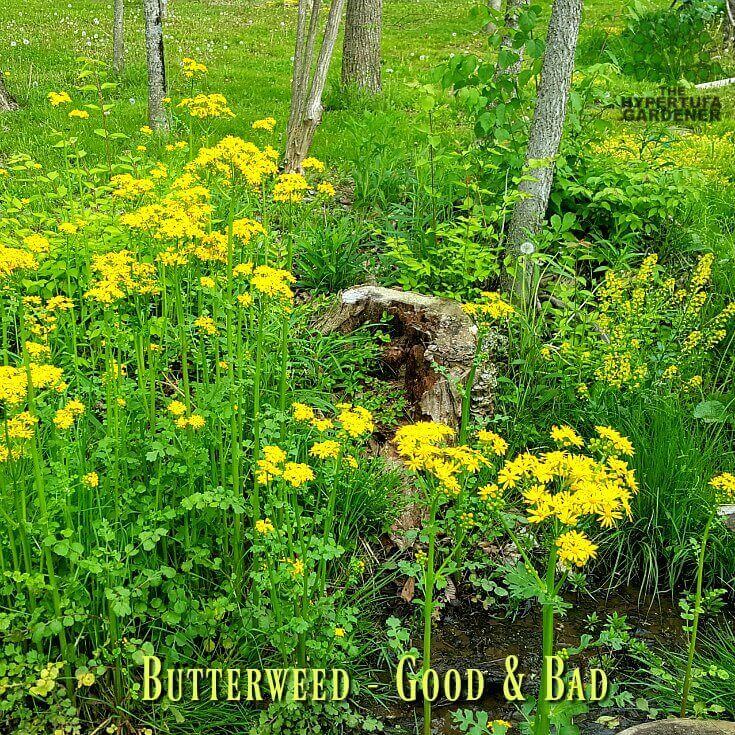
With the help of the internet and another Facebook group Ohio’s Wildflowers And Flora – Native, Alien, and Escaped, I have identified this as Butterweed. It is also known as Packera glabella or Senecio glabellus and Cressleaf groundsel.
Butterweed is a plant native to the United States. It is an annual plant growing from seed during the first year’s winter period, forming a rosette on the ground, and then in the spring, it shoots up a tall strong hollow stem with bright yellow flowers on the top.
You can see from the photo above, it is a really pretty sight. It makes a pretty picture when driving along the country roads around me. Most of the roadsides have it and it is also in the fields and pastures.
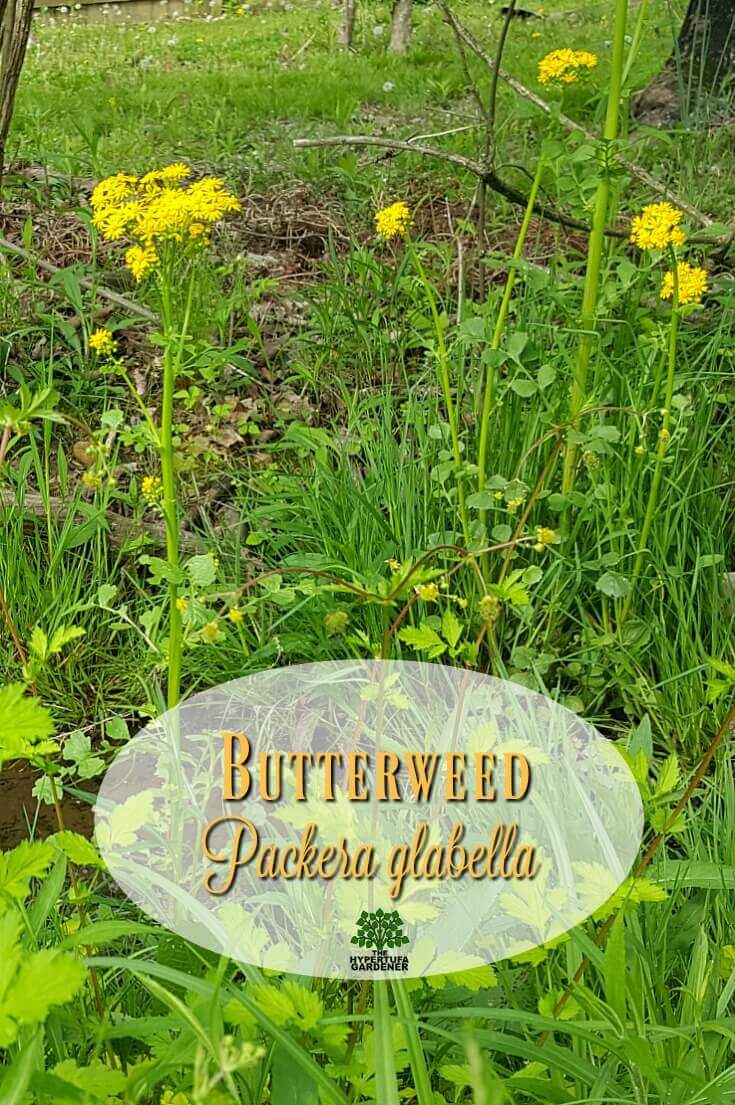
But there is where the problem lies. Unfortunately, this plant is toxic to both cattle and horses. Deer “have enough sense to avoid it.” according to this article. Ref: http://www.ecologicalgardening.net/2014/06/butterweed-butterwhat.html. The plant contains an alkaloid called pyrrolizidine which causes liver damage. Cattle and horses who dine on this plant don’t just drop dead but decline in health and eventually can die.
Around here in Ohio, we have many open pastures with cattle so it is a concern for our farmland. After flowering, I plan to completely cut down the plants so they will not go to seed and fly everywhere.
These butterweed flowers form a puff ball much like the dandelion and blow in the wind. Even though I am in a residential area, I am close to farmland and since wind-blown seeds can go far, I will protect and respect the battle against this weed and its harm to animals and not let it go to seed on my land.
It is such a shame because it is a beautiful flower.
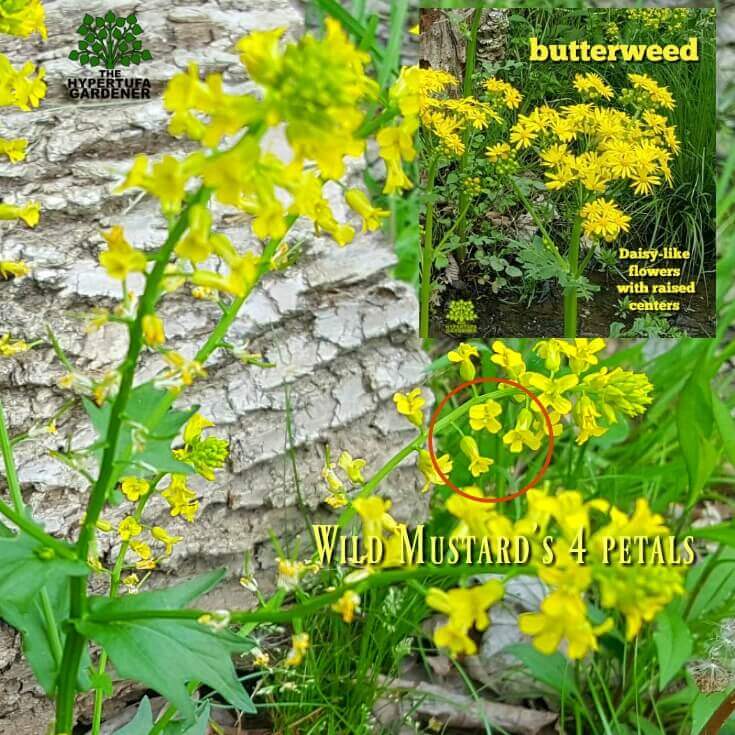
Butterweed Compared to Wild Mustard
The butterweed plant is usually mistaken for wild mustard due to the similarity of the color of the flowers and the overall height of the plant. But the wild mustard is a Brassicaceae and the butterweed is of the asteraceae family.
Mustards are 4-petaled flowers and these butterweeds have many petals with a raised center, a “pincushion” center like its cousin, the common aster.
Wild mustard is harvested for seeds and salads and other uses, but it has a cousin Garlic Mustard. This is another evil plant that is invading forests and smothering other native plants as it seeds and takes over whole forested areas. I have spent many hours pulling the weed to try protect out forests here in Greene County. Don’t let this one take over in any area that you see it growing. It attempts to smother everything else. Ref: http://ohioline.osu.edu/factsheet/F-66.
“Garlic mustard (Aliaria petiolata) is a cool-season biennial herbaceous plant first observed in the United States in the mid 1800s. It was introduced from Europe either accidentally or intentionally as a cooking herb. It is extremely tolerant of shaded conditions and is capable of establishing extensive, dense colonies in woodlands. In such situations, it out-competes and displaces native plants (wildflowers, trees, and shrubs) and the wildlife species that depend on them.”
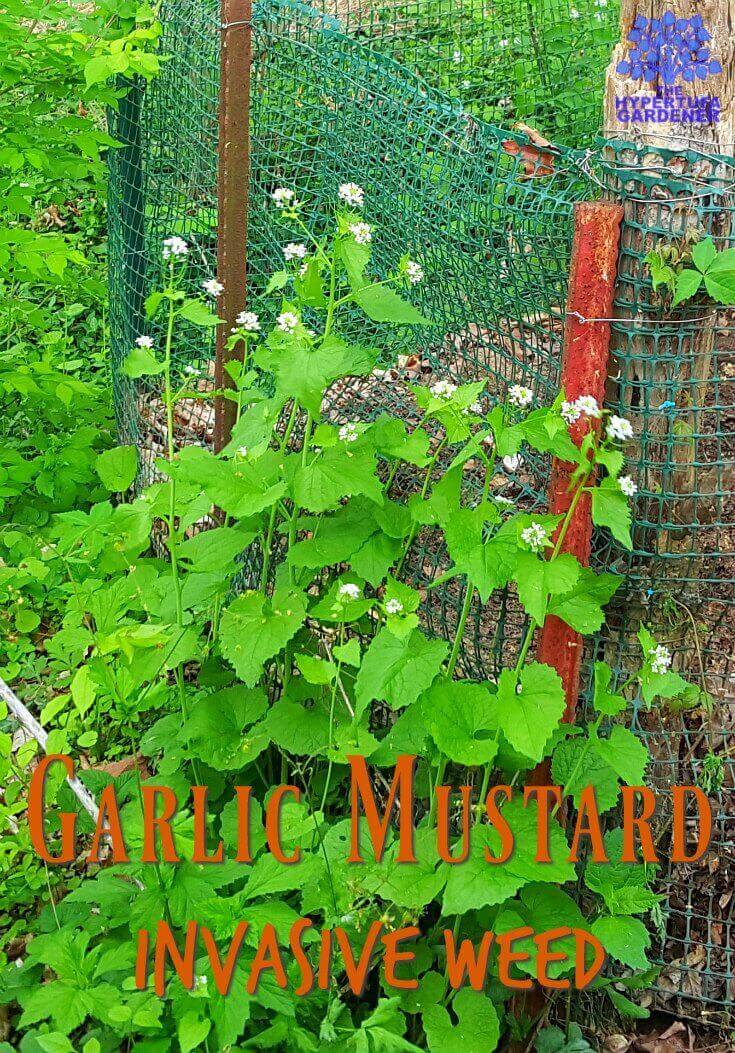
I will miss my butterweed when it is gone. I am quite sure that we will have it blooming for the next several springs as the seeds in the ground sprout and grow. And maybe more birds or winds may bring in more seeds, but I will try my best not to add to the problem.
But those drifts of butterweed are lovely. I will miss them.


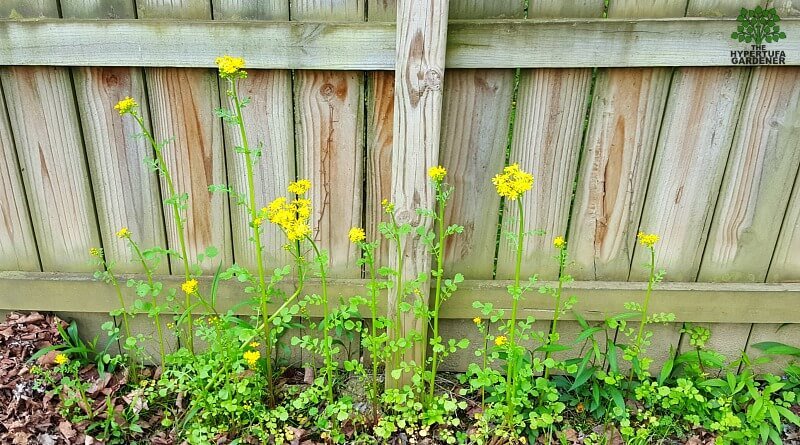
It’s not great to have around cattle. But this wildflower is an incredible food source for pollinators and is one of the most important food sources in it’s bloom season. It gets a bad rap but has a high protein pollen which is essential for bees. If you have a large garden area, it might be wise to grow in that area. I’ve been trying to find seed to encourage pollination and beneficial native insects are in a severe decline in mine and many areas.
I have one plant growing by my back door. I knew it was a weed, just not what kind, and it is so pretty I was thinking of saving it. Now I know – and it will go as it quits blooming! Thanks for the extensive information – I was trying to identify it on iNaturalist but it didn’t give enough information for a positive ID.
Thanks so much. I am glad that I was able to help you.
I’m here in Greene County also. Love the looks of these flowers every year, especially the big open field off 35 and Valley/Trebien. Inspired me to write a poem a few years back.
Bury me ‘mongst the wildflowers
Where the yellow butterweed grows
Where all of Creation’s Glory
Waves casually to and fro
Where animals form the Congregation
And the winds, my eulogy, blow
Yes, bury me ‘mongst the wildflowers
When back to the Lord I go
Keith, that is beautiful!
Nice poem, Keith.
Wow. That’s beautiful.
Lovely poem!
Has anyone planted one in a pot
I have not and don’t think I would want to do that.
Thanks so much. I couldn’t find it in my wildflower
book. It sure looks pretty next to our woods and all the greenery.
Yes, it sure is a pretty sight in spring.
Hi, thank you for this post on butterweed. I saw a large patch of it growing once and have wanted it ever since. I have a large marsh area that requires deer resistant plants and would love some “wild” seeds if you come across any that you haven’t pulled up in time to prevent it. Even a few seeds would be welcome. (There are no cattle or horse ranches close by.)
Diane
I don’t have any seeds since we mowed them all down after blooming. I didn’t want seed to disperse around here. In the spring when you see some blooming, you might want to dig some up and plant where you want them. Just be sure you want them!
Don’t plant invasive plants, please.
Thanks. I always wondered what those were.